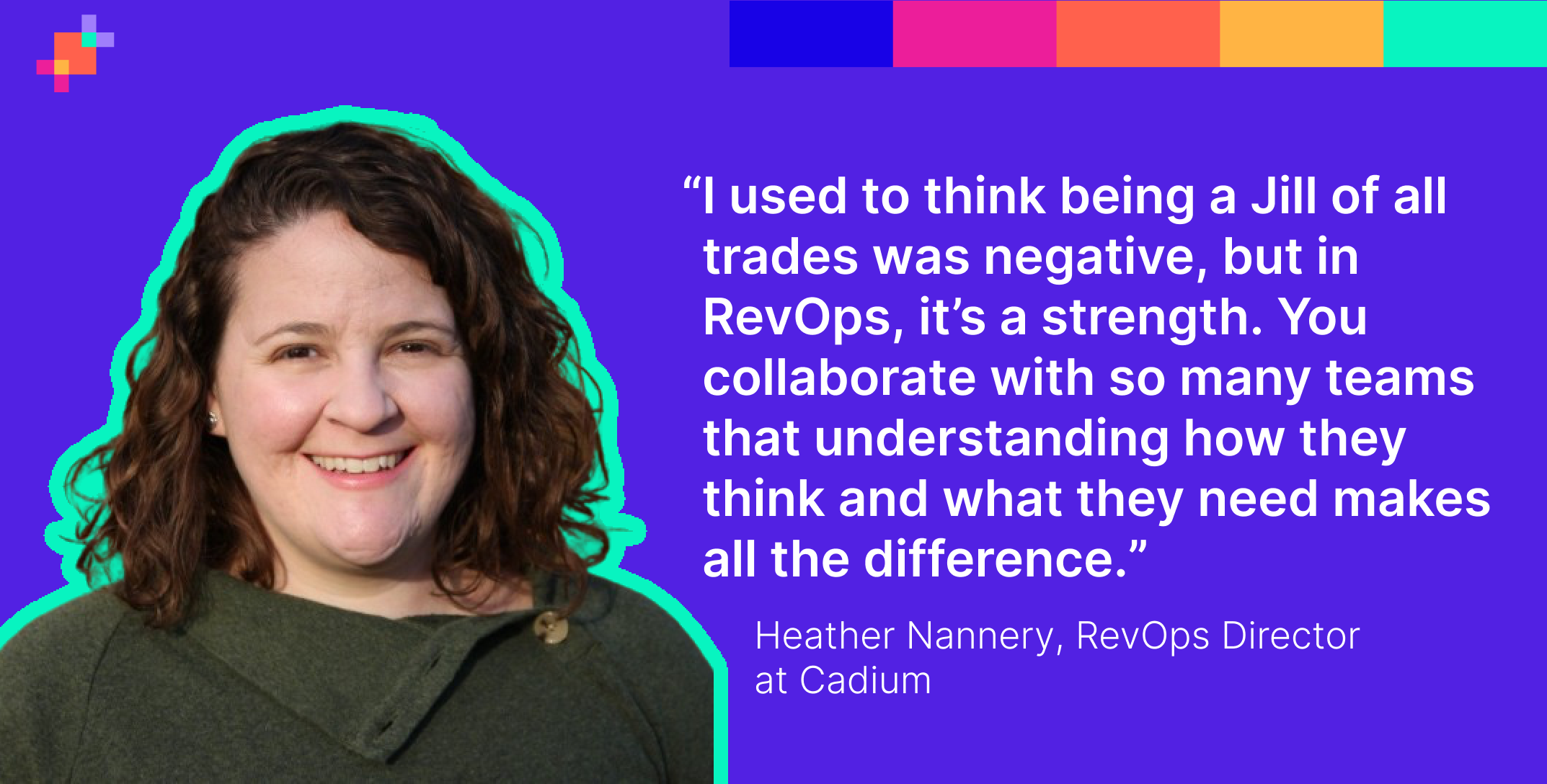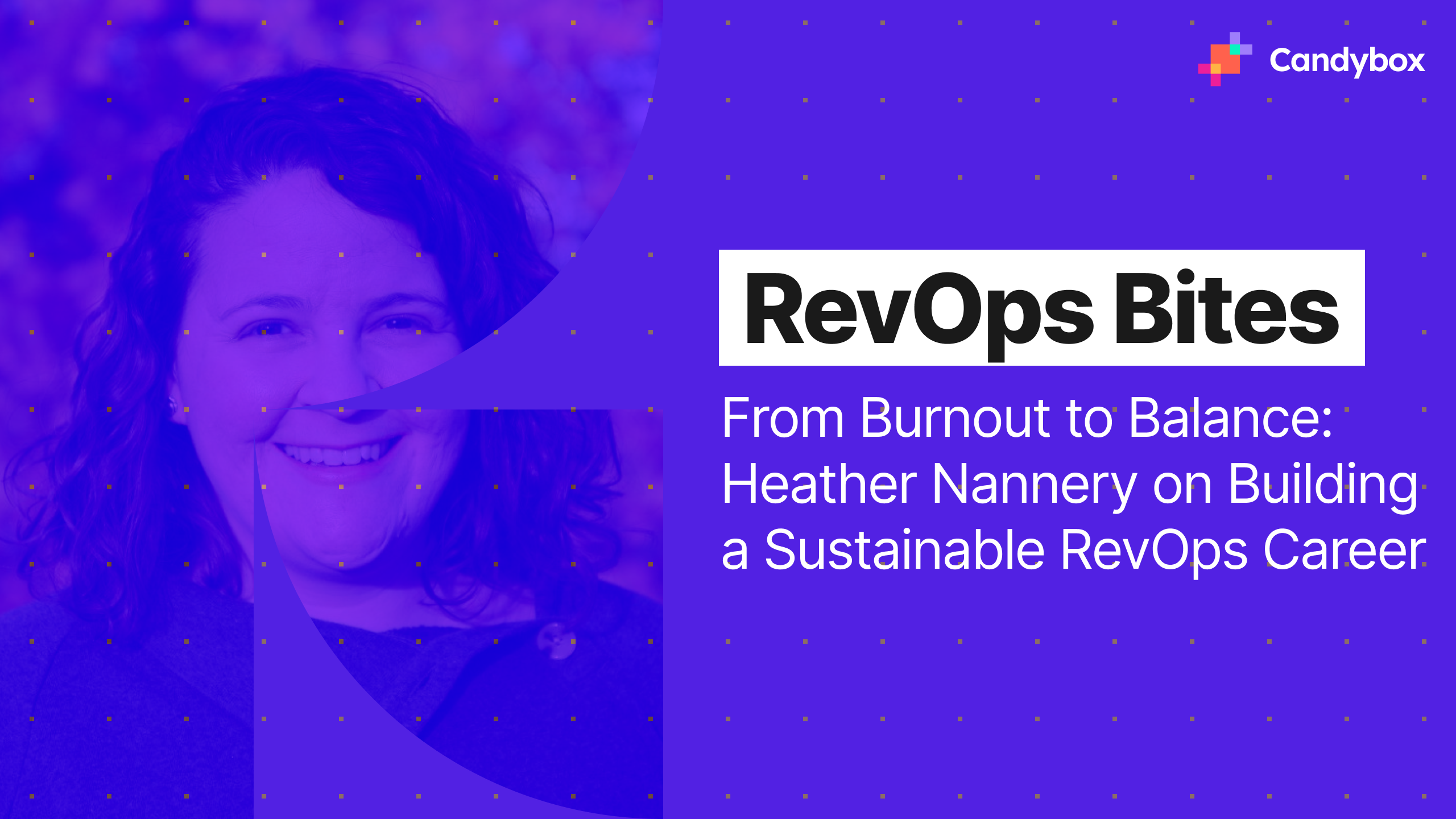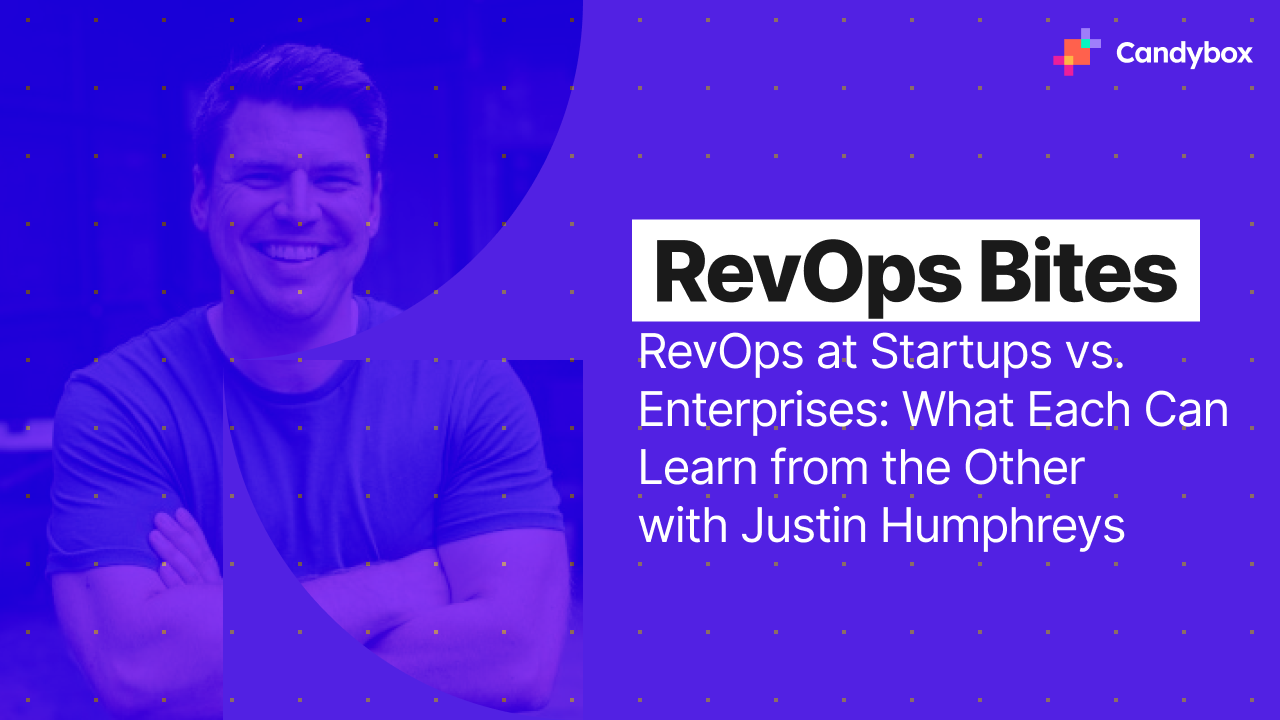Finding RevOps
Heather Nannery, now Director of Revenue Operations at Cadmium, began her career in nonprofit communications managing campaigns and donor data in Razor’s Edge. When she transitioned into tech, she joined a company where operations spanned finance, procurement, and sales development. Over time, she began building the connective tissue between go-to-market functions, eventually formalizing the company’s first RevOps team.
Each new challenge built on the last: managing SDRs, running renewals, and leading revenue operations end-to-end. What she once viewed as scattered experience eventually became her biggest strength.

Building RevOps Around Collaboration
Heather’s experience working across finance, sales, and operations shaped her collaborative approach to RevOps. When she joins a new company, one of her first steps is to meet with every department, from marketing, sales, success, product, and finance to understand how each defines success and where friction exists.
Those conversations form the foundation of her RevOps roadmap. She treats internal teams as her customers, ensuring that each system or process built by RevOps makes their work easier and more effective. For her, RevOps isn’t a back-office function; it’s an operating layer that helps teams work together and focus on the customer journey.
Avoiding the “Fix Everything” Cycle
Early in her career, Heather became the go-to problem solver. The result was burnout. She eventually realized that without clear scope and boundaries, RevOps quickly becomes a catch-all for every business issue.
Now, she defines RevOps’ role at the start of every engagement. That includes documenting ownership, creating visibility into priorities, and setting realistic expectations about capacity. She revisits those agreements regularly to prevent scope creep and ensure the team is focused on high-impact work.
She also stresses the importance of being transparent about strengths and limits. Rather than trying to do everything, she believes RevOps leaders should clearly outline where they excel, where they need resources, and what they’re willing to learn.
Taking Time to Reset
After years of nonstop work, Heather experienced severe burnout and health issues like migraines, exhaustion, and physical strain that made her realize something needed to change. She made the difficult decision to take a year off to focus on recovery and recalibrate how she approached work.
During that time, she prioritized rest, therapy, and wellness routines. When she eventually returned to work, her perspective had shifted completely. Health and balance were no longer secondary considerations, but they were the foundation of how she led.
She now structures her workdays with intention, builds in time away from screens, and encourages her teams to protect their own time as well. By focusing on sustainability, she’s found she can lead with more clarity, energy, and empathy.
Starting Strong in a New Role
When Heather joined Cadmium, she applied a structured 90-day framework to ground her onboarding in facts rather than assumptions. Her approach focuses on six key pillars:
- Systems: Audit the tech stack, data integrity, and CRM setup.
- People: Identify key stakeholders and define ownership clearly.
- Revenue Strategy: Understand the company’s product, pricing, and market position.
- Process: Review how teams hand off work and where bottlenecks occur.
- Reporting: Evaluate the quality and reliability of performance data.
- Enablement: Assess whether teams have the training and tools needed to succeed.
She uses this assessment to create a “state of the union” for RevOps, which she then reviews with team leaders to validate findings and align on priorities. Her rule of thumb: focus first on what most directly drives business outcomes. For example, if pipeline generation is lagging, that takes precedence over optimizing internal workflows.
What Stays With You
Heather’s story is a grounded look at what sustainable RevOps leadership really requires: clear boundaries, empathy across teams, and respect for personal limits.
Her experience shows that effectiveness in RevOps isn’t about doing it all; it’s about doing what matters most, consistently and sustainably.











.png)

